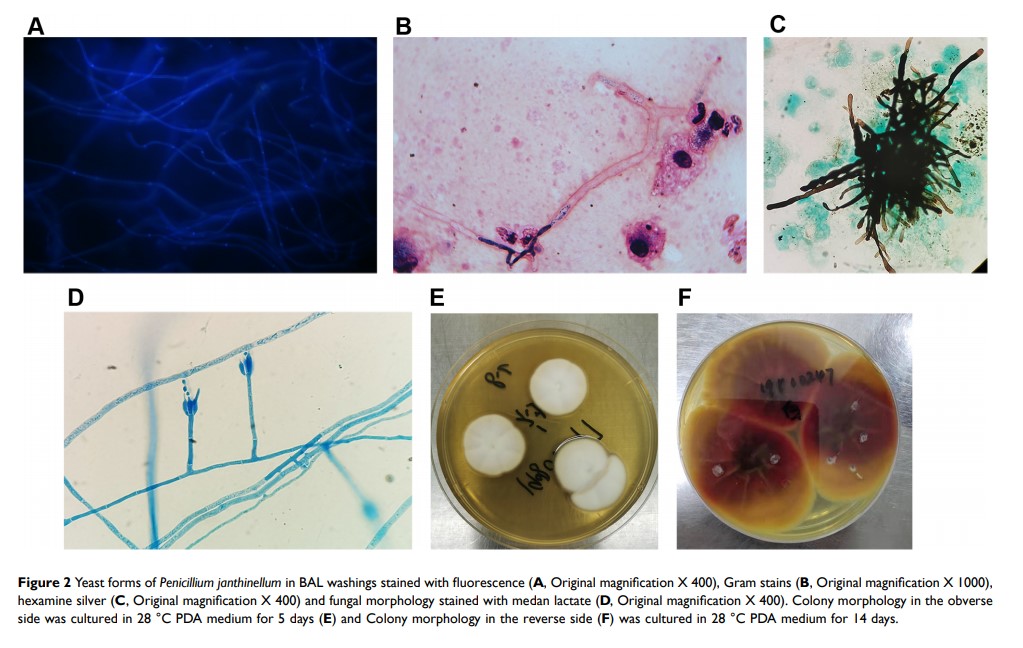9 7 8 1 6
论文已发表
注册即可获取德孚的最新动态
IF 收录期刊
- 3.3 Breast Cancer (Dove Med Press)
- 3.4 Clin Epidemiol
- 2.5 Cancer Manag Res
- 2.9 Infect Drug Resist
- 3.5 Clin Interv Aging
- 4.7 Drug Des Dev Ther
- 2.7 Int J Chronic Obstr
- 6.6 Int J Nanomed
- 2.5 Int J Women's Health
- 2.5 Neuropsych Dis Treat
- 2.7 OncoTargets Ther
- 2.0 Patient Prefer Adher
- 2.3 Ther Clin Risk Manag
- 2.5 J Pain Res
- 2.8 Diabet Metab Synd Ob
- 2.8 Psychol Res Behav Ma
- 3.0 Nat Sci Sleep
- 1.8 Pharmgenomics Pers Med
- 2.7 Risk Manag Healthc Policy
- 4.2 J Inflamm Res
- 2.1 Int J Gen Med
- 4.2 J Hepatocell Carcinoma
- 3.7 J Asthma Allergy
- 1.9 Clin Cosmet Investig Dermatol
- 2.7 J Multidiscip Healthc

SLE 患者的微紫青霉菌性肺炎:一项病例研究
Authors Li X, Zong L, Zhu Y, Li Y, Zhou Y, Zhou H
Received 30 April 2020
Accepted for publication 17 July 2020
Published 7 August 2020 Volume 2020:13 Pages 2745—2749
DOI https://doi.org/10.2147/IDR.S255968
Checked for plagiarism Yes
Review by Single anonymous peer review
Peer reviewer comments 4
Editor who approved publication: Professor Suresh Antony
Abstract: The risk of opportunistic fungal infections is high in immunocompromised patients. The Penicillium genus is common and diverse in nature. However, it rarely causes infection in humans. Here, we reported a case of Penicillium janthinellum pneumonia in a systemic lupus erythematosus (SLE) patient, and the morphological characteristics of P. janthinellum were also described. The patient was a 64-year-old female. She had been diagnosed with SLE and membranous lupus nephritis 10 months previously. Her medications included methylprednisolone, cyclosporine, and hydroxychloroquine. She was admitted because of fever and diagnosed with pneumonia. P. janthinellum was isolated from sputum and bronchoalveolar lavage (BAL) samples. BAL fluid stained with multiple stains showed the presence of somewhat dichotomously branching septate fungal hyphae. P. janthinellum was identified, and its morphological features were described. Antibiotic susceptibility profiles showed that this strain had higher minimum inhibitory concentration (MIC) values in response to multiple antifungal drugs. The patient died 10 days after diagnosis. To the best of our knowledge, this report is the second to demonstrate that P. janthinellum causes infection and is the first to present an infection (pneumonia) caused by P. janthinellum in an SLE patient. Clinical and laboratory personnel should be aware that the Penicillium genus also contains pathogenic bacteria that cannot simply be treated as contaminants, especially in immunosuppressed patients.
Keywords: BAL fluid, Penicillium janthinellum , SLE
